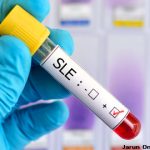The team anticipates this novel autoantibody may prove to be a useful marker of disease activity. Unlike other autoantibodies that can be detected in people with pre-clinical disease, DNASE1L3 autoantibodies are not present in these individuals. Instead, the presence of the antibody to DNASE1L3 appears to indicate a patient is on the verge of more serious clinical disease.
Dr. Buyon speculates these autoantibodies may be an early marker of kidney disease that can be used to trigger concern and possibly treatment to prevent impending inflammation and subsequent scarring. Such a marker would be especially valuable because lupus nephritis is a major risk factor for morbidity and mortality in SLE and is currently diagnosed through invasive procedures, such as a kidney biopsy.
The Origins of Lupus
Because null mutations in the gene coding for DNASE1L3 generate lupus, Dr. Reizis’ work suggests DNASE1L3 and only DNASE1L3 (not DNASE1) is required to degrade extracellular dsDNA. “Understanding the origins of lupus is really the Holy Grail of all who dedicate their studies to this disease,” says Dr. Buyon.
In this case, rare patients with an extreme form of lupus have highlighted a key aspect of the functioning system. Using this clue, Dr. Buyon, a practicing rheumatologist, and Dr. Reizis, a bench researcher, performed a successful bench to bedside and back collaboration to yield what appears to be an important part of the answer.
Lara C. Pullen, PhD, is a medical writer based in the Chicago area.
References
- Hartl J, Serpas L, Wang Y, et al. Autoantibody-mediated impairment of DNASE1L3 activity in sporadic systemic lupus erythematosus. J Exp Med. 2021 May 3;218(5):e20201138.
- Wan Z, Pascual V. Breaching self-tolerance by targeting the gatekeeper. J Exp Med. 2021 May 3;218(5):e20210322.
- Sisirak V, Sally B2, D’Agati V, et al. Digestion of chromatin in apoptotic cell microparticles prevents autoimmunity. Cell. 2016 Jun 30;166(1):88–101.


